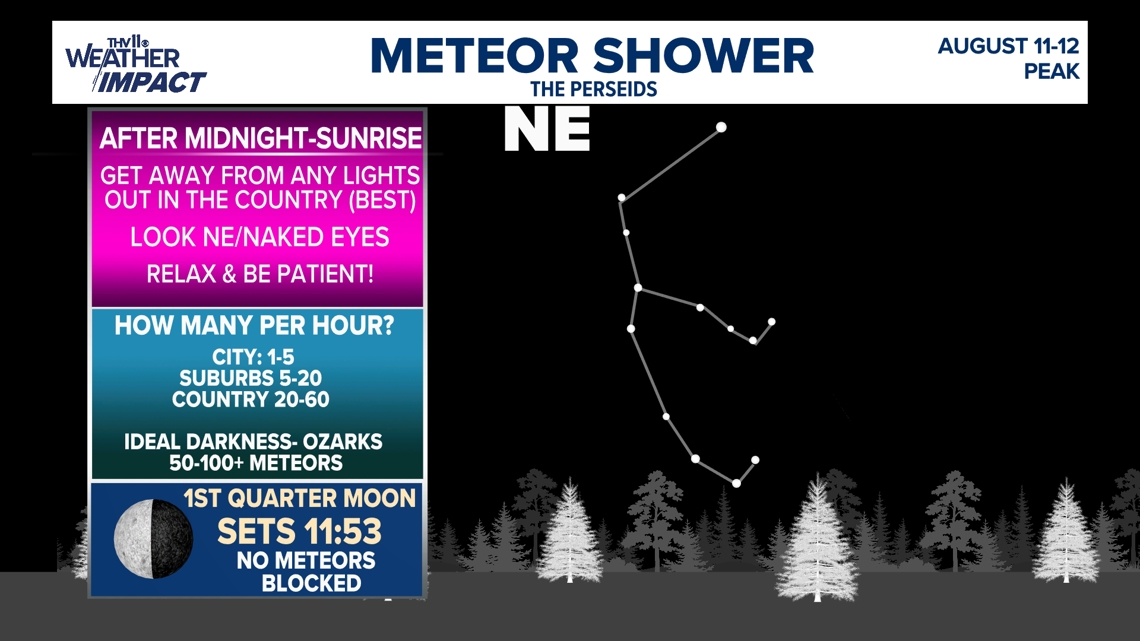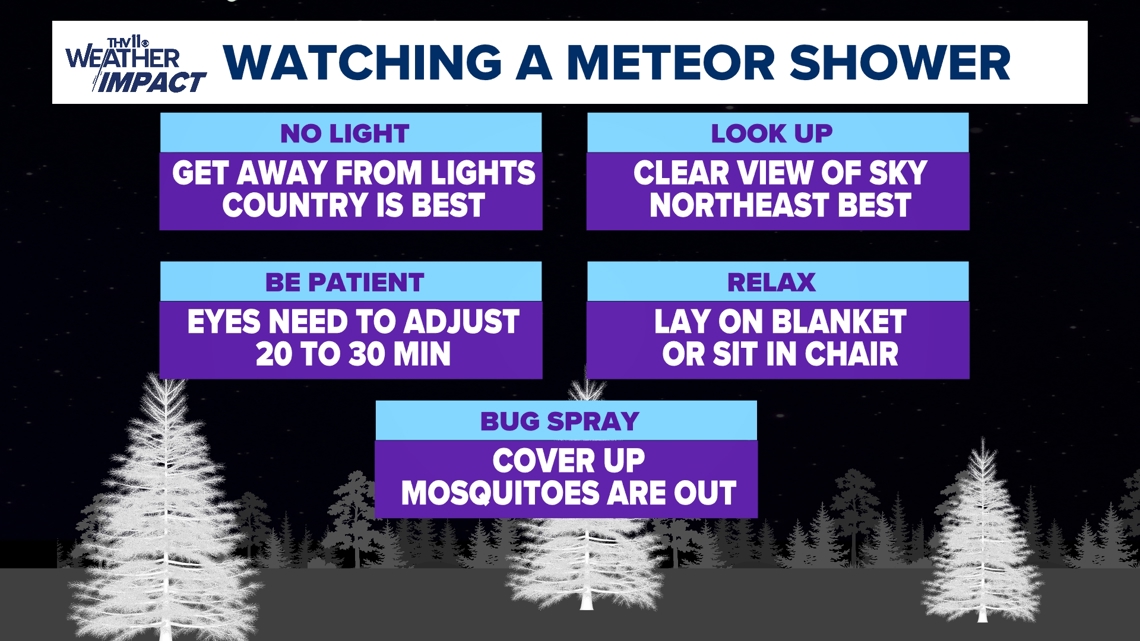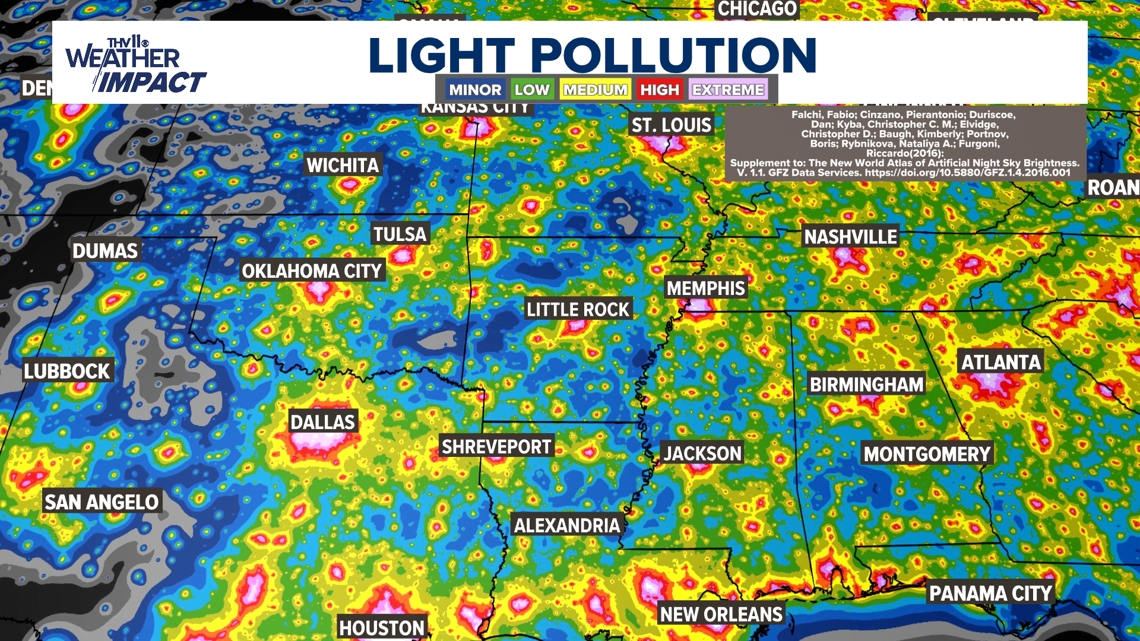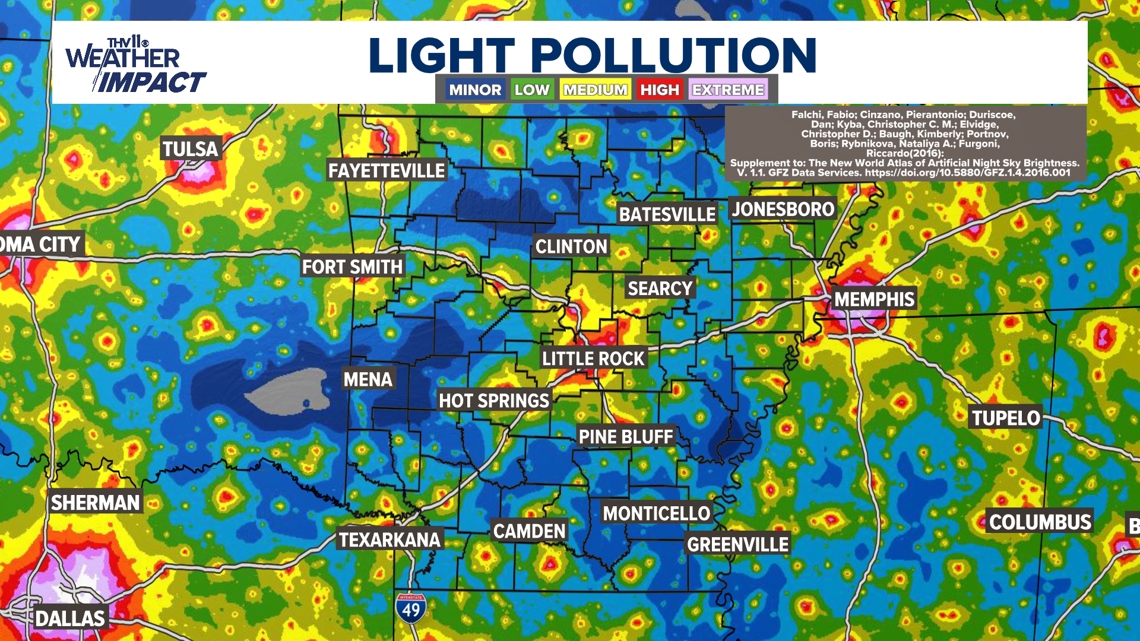LITTLE ROCK, Ark. — If you have never seen a meteor or “shooting star” you'll soon have your chance to experience one.
In just a few days, the best meteor shower of the year will peak on August 11-12, 2024.
While there are several meteor showers that you hear about throughout the year, the ones that really matter and are worth checking out are the Perseids which typically happen in mid-August, and the Geminids which occur in December.
This year, the Perseids will have some interference from a first-quarter moon during the evening, and the moon will set close to midnight.
Therefore, the ideal viewing conditions will take place after midnight and into the early morning hours of Monday, as long as the skies are clear.


How can I see the meteor shower?
To see the meteor shower you need to have a clear view of the sky, especially when looking North and Northeast, where the constellation Perseus is located.
This is where the meteors may seem to travel from. However, you will see meteors in any part of the sky. Look where you have the darkest view.
Get comfortable because you should spend at least 30 minutes viewing the sky to see several streaks of light zip through the darkness. Some will be very faint and others might surprise you as they glow with color for a few seconds before disappearing.
If you are really lucky, one meteor could be so bright that it casts shadows! I have seen this once in my life and it was a surreal experience.
Since you will be looking up at the sky, the best way to view the shower is to lie back on a chair or lay on a blanket. You don’t want to look up at the sky for more than 5 minutes, because you will get neck pain.
There is no need for a telescope or binoculars.
Just scan the sky with your naked eyes and try not to blink too much. If you blink you could miss them. Remember to cover up and put on bug spray as mosquitoes can quickly ruin the night.


When is the best time to see the meteor shower?
The best time to check out the meteor shower will be on Sunday night into Monday morning.
The key factor in seeing as many meteors as possible will be clear skies and getting away from any light pollution.
There is a significant difference in skywatching in the Little Rock metro vs. doing so in Perry County or in the country. Going on a short drive that is 30 minutes to an hour away could make a difference whether you get the chance to see five meteors or 25 meteors!




How many meteors can I see?
If you live in a city, you will have the chance to see only the brightest meteors, which will range from one to five per hour. In the suburbs about five to 20 meteors are possible.
However, in the country and away from light pollution, 40 to 60+ meteors per hour will be possible. Those enjoying the darkest night sky, for example, in the Buffalo River Wilderness areas of Newton and Searcy counties could witness a spectacular show of 80 to more than 100 meteors per hour!
What causes meteor showers?
Most meteor showers are caused by a comet leaving debris as it arrives from outside the solar system and is headed for an orbit around the sun.
As the Earth passes through this field of dust and rock, those pieces burn up in the Earth’s atmosphere causing vivid streaks of light. The “stardust” is just a grain of sand, but some can be larger than a pebble.
The result is a bright light that produces a trail lasting for a few seconds. The average speed of a meteor is 37 miles per second, according to NASA.
To have the best chance at seeing the meteor shower, let’s hope for clear skies because right now it appears that there will be high clouds in parts of the area.

